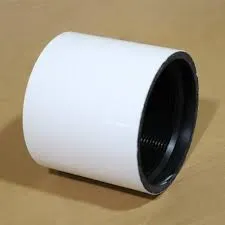- Afrikaans
- Albanian
- Amharic
- Arabic
- Armenian
- Azerbaijani
- Basque
- Belarusian
- Bengali
- Bosnian
- Bulgarian
- Catalan
- Cebuano
- Corsican
- Croatian
- Czech
- Danish
- Dutch
- English
- Esperanto
- Estonian
- Finnish
- French
- Frisian
- Galician
- Georgian
- German
- Greek
- Gujarati
- Haitian Creole
- hausa
- hawaiian
- Hebrew
- Hindi
- Miao
- Hungarian
- Icelandic
- igbo
- Indonesian
- irish
- Italian
- Japanese
- Javanese
- Kannada
- kazakh
- Khmer
- Rwandese
- Korean
- Kurdish
- Kyrgyz
- Lao
- Latin
- Latvian
- Lithuanian
- Luxembourgish
- Macedonian
- Malgashi
- Malay
- Malayalam
- Maltese
- Maori
- Marathi
- Mongolian
- Myanmar
- Nepali
- Norwegian
- Norwegian
- Occitan
- Pashto
- Persian
- Polish
- Portuguese
- Punjabi
- Romanian
- Russian
- Samoan
- Scottish Gaelic
- Serbian
- Sesotho
- Shona
- Sindhi
- Sinhala
- Slovak
- Slovenian
- Somali
- Spanish
- Sundanese
- Swahili
- Swedish
- Tagalog
- Tajik
- Tamil
- Tatar
- Telugu
- Thai
- Turkish
- Turkmen
- Ukrainian
- Urdu
- Uighur
- Uzbek
- Vietnamese
- Welsh
- Bantu
- Yiddish
- Yoruba
- Zulu
coupling tube fitting
Understanding Coupling Tube Fittings An Essential Component in Fluid and Gas Systems
In various industrial applications, the functionality and reliability of fluid and gas systems depend significantly on the components used. Among these components, coupling tube fittings play a crucial role in ensuring tight, leak-proof connections between tubes, hoses, and pipes. In this article, we will explore the various aspects of coupling tube fittings, including their types, applications, advantages, and installation considerations.
What are Coupling Tube Fittings?
Coupling tube fittings are mechanical devices used to connect two fluid or gas lines with the purpose of allowing the seamless flow of fluids or gases. They are typically made from a variety of materials, including stainless steel, brass, and plastic, to accommodate different application requirements, such as corrosion resistance and temperature tolerance. These fittings come in various configurations, including straight couplings, elbow couplings, and tee fittings, which allows them to cater to diverse installation layouts.
Types of Coupling Tube Fittings
1. Compression Fittings These fittings are one of the most common types used in fluid and gas applications. They create a secure seal by compressing a ring around the tube when tightened. Compression fittings are favored for their reliability and ease of installation, making them ideal for both high-pressure and vacuum systems.
2. Push-to-Connect Fittings Often used in pneumatic and hydraulic applications, push-to-connect fittings allow for quick and easy connections without the need for tools. Simply inserting the tube into the fitting creates a tight seal, making these fittings popular in applications where frequent disconnection and reconnection are required.
3. Welded Fittings For applications requiring permanent connections, welded fittings are the go-to choice. These fittings are welded to the tubes or pipes, ensuring a strong bond that can withstand high pressure and temperature conditions.
4. Flanged Fittings Utilized in larger diameter pipes, flanged fittings provide a secure, bolted connection. The flanges enable easy disassembly and maintenance, making them suitable for systems where access to internal components is necessary.
Applications of Coupling Tube Fittings
coupling tube fitting

Coupling tube fittings are utilized in a multitude of industries, including
- Manufacturing Used in machinery and equipment for fluid transport. - Automotive Used in fuel lines, brake systems, and cooling systems to manage fluid flow. - Aerospace Critical in hydraulic systems where precision fittings are a must. - Food and Beverage In applications requiring sanitary connections to prevent contamination.
Advantages of Coupling Tube Fittings
- Leak-Proof Design One of the standout features of coupling fittings is their ability to create a secure, leak-proof connection, which is vital in preventing fluid loss and maintaining system efficiency. - Versatility With various types available, coupling tube fittings can be used in different applications, adapting to the specific needs of each project. - Easy Installation and Maintenance Many types of coupling fittings are designed for straightforward installation, reducing labor costs and time on-site. Additionally, they are often reusable, which can save money in the long run.
Installation Considerations
When installing coupling tube fittings, certain best practices should be noted
- Compatibility Ensure that the fitting material is compatible with the fluids or gases it will transport. - Correct Sizing Using properly sized fittings is crucial for preventing leaks and maintaining system integrity. - Torque Specifications Follow manufacturer guidelines for torque settings when securing fittings to avoid over-tightening, which can lead to damage.
Conclusion
Coupling tube fittings are indispensable components in the realm of fluid and gas systems, offering reliable connections that enhance system performance across multiple industries. By understanding the different types and their applications, as well as adhering to proper installation practices, engineers and technicians can ensure operational efficiency and safety in their systems. As industry demands continue to evolve, the relevance and innovation in coupling tube fittings will undoubtedly keep pace, leading to enhanced solutions for complex challenges.
-
Tubing Pup Joints: Essential Components for Oil and Gas OperationsNewsJul.10,2025
-
Pup Joints: Essential Components for Reliable Drilling OperationsNewsJul.10,2025
-
Pipe Couplings: Connecting Your World EfficientlyNewsJul.10,2025
-
Mastering Oilfield Operations with Quality Tubing and CasingNewsJul.10,2025
-
High-Quality Casing Couplings for Every NeedNewsJul.10,2025
-
Boost Your Drilling Efficiency with Premium Crossover Tools & Seating NipplesNewsJul.10,2025







